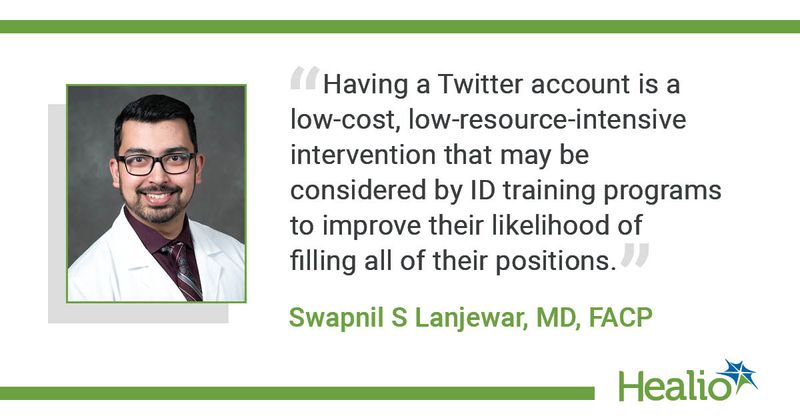Does having a Twitter account help fill ID fellowship programs?
During the 2021 match cycle, a presence on Twitter and having specialized training tracks were associated with a higher likelihood of filling infectious disease fellowships programs, researchers found.
“Historically, despite the essential nature of the field, trainee interest in the infectious disease subspecialty has been low. Thus, the total number of ID training positions far exceeds the number of applicants, causing some programs to go unfilled,” Swapnil S. Lanjewar, MD, FACP, an assistant clinical professor of infectious diseases at the University of Wisconsin-Madison School of Medicine and Public Health, told Healio. “We performed this study to better elucidate the factors that influence trainees in their choice of a program.”

Lanjewar and colleagues assessed ID fellowship programs in the U.S. — including Puerto Rico — that participated in the National Resident Medical Matching Program for the 2019, 2020 or 2021 match cycles.
According to the study, they searched and assessed program websites, noting the most recent website update; their presence on social media; and several other factors, including fellowship length, additional degrees offered and university community affiliations, and compared these factors with program fill rates.
Overall, the data demonstrated that for the 2021 match cycle, ID fellowship programs that had an active social media presence with an active Twitter account and offered specialized training tracks — research, immunocompromised host, HIV, infection control, antimicrobial stewardship, clinician educator — were more likely to fill their programs, although neither variable was independently associated with program filling.
Having a Twitter account did not correlate with the likelihood of filling programs in 2019 and 2020, and no particular specialty track was associated with filling, the researchers reported.
However, presence on the U.S. News and World Report Honor Roll and NIH funding rank were associated with likelihood of filling all positions, they found.
“Having a Twitter account is a low-cost, low-resource-intensive intervention that may be considered by ID training programs to improve their likelihood of filling all of their positions, especially in the age of virtual interviews,” Lanjewar said. “Offering specialized training tracks and extending flexibility between 2- or 3-year training opportunities — when possible — is an effective intervention to better meet the needs of prospective ID fellows.”
